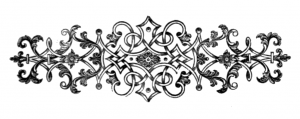3 Steps to Taking Your Character Further and Deeper With…Anger?
We all know how hard it is to write emotion: understanding what a character is feeling exactly, and to what degree, and then showing it to readers. And of course, that’s just the tip of the challenge. What makes it truly difficult is that whatever body language, thoughts and actions we use MUST be ones that fit each individual’s personality seamlessly.
Emotional description is not one size fits all. This means that while Kara might throw a mug at the head of her deadbeat husband as he wanders in at six am loaded to the gills, Barbara will not. Her anger is a slow simmer that lasts, displayed through burnt toast and undercooked eggs, of phone messages that are not passed on, of leaving the gas tank near empty at every opportunity.
M J Bush is with us today, shedding insight on one of the most volatile emotions of them all: ANGER. On the outside, it seems like such a cardinal, easily identifiable emotion, but there are many forms it can take. Which is right for your character?
The page was crawling with them. Characters of every stripe had gathered to mutiny:
“We’re angry! And you’re not getting our anger right! It’s an outrage!”
“I’d never sulk like that!”
“I’m far more refined than that display.”
“Come down here and I’ll show you the punch I’d throw!”
Do you ever fear being that author, the one getting emotions so wrong on the page that your characters actually come alive and mutiny?
 I’m going to be frank for a moment. When I started researching this article, I thought it would be fairly easy to categorize what types of anger came most often to different personalities. I even had some ideas already drawn up.
I’m going to be frank for a moment. When I started researching this article, I thought it would be fairly easy to categorize what types of anger came most often to different personalities. I even had some ideas already drawn up.
The idea was to help us write our characters more convincingly. You can show the typical reaction in your character to establish consistency, and then push them into another type of anger that would be just as human, just as true, but showing a different facet of their personality.
But the sheer number of nuances makes that categorization impossible unless I write a book on it. So instead, I’ll try to enable you to figure things out.
Step One: When your character is angry, how does it usually manifest? Here’s a short list of possibilities:
Aggravated
Aggressive
Aggrieved
Agitated
Annoyed
Animosity
Bitter
Contempt
Controlling
Cranky
Cruel
Detesting
Exasperated
Enraged
Frustrated
Furious
Grouchy
Hostile
Indignation
Irate
Irritable
Ire
Loathing
Livid
Mean/vicious
Obsessive
Offended
Outraged
Provoked
Resentful
Scornful
Seething
Sulky
Sullen
Vengeful
Vexed
Wrathful
Remember, it’s nuances we’re looking for here. Every word has its own meaning. Ire is tightly controlled. Rage is out of control. Cranky is a passing mood based on self; grouchy is a bit more lasting and focused on others.
It’s fine to have a few “normal” types of anger. Your character should have multiple facets.
Step Two: Now, how can you push them to react with a different anger? What would take them further? What would make a certified hothead react with sullenness or barely registered annoyance?
It’s a hard-hitting tactic to make your readers rally behind a character or commiserate with him. Consider this line from The Name of the Wind by Patrick Rothfuss:
There are three things all wise men fear: the sea in storm, a night with no moon, and the anger of a gentle man.
The contrast between the normal gentleness and the fear-inducing anger is memorable. It can make a reader want to cheer for him standing up to whatever outrage forced him to abandon his gentleness.
For another example, consider a sensitive soul that has long used irritability to protect and isolate himself. Vex him with a puzzle, a character he can’t understand, especially if he’s used to labeling people, and he’ll have to move out of his isolated comfort zone to interact.
The bottom line is this: get your character to act “out of character” in a way that isn’t actually out of character when the motives are examined. It’s good for the story and the characterization.
Step Three: Figure out how he’ll react after the anger has faded. Or if it does at all.
How does it change him, even if he doesn’t stay angry? What emotions does he go through? How do the other characters react? How does it change the relationships?
Does he learn a lesson, or something about himself?
Anger Tells a Story All its Own. Go Use It.
Don’t worry about your characters staging a mutiny. Just make sure you give them solid reasons to act the way they do, and then have them react to how they acted.
You’ve got a good head on your shoulders. You can do this. Here are the steps once more:
Identify his normal anger.
Figure out how to push him beyond that.
And show him reacting to that difference.
It goes for guys and girls, protagonists, antagonists, and supporting characters. You can apply it to any character the story calls for.
Because that’s what it’s all about:
Your story.
 MJ Bush is The Analytical Creative. Her writing advice steps back to take in the whole picture, then dives in to grab the pearls of usable detail. She’s the founder of Writingeekery.com and a full time fiction coach, editor, and writer.
MJ Bush is The Analytical Creative. Her writing advice steps back to take in the whole picture, then dives in to grab the pearls of usable detail. She’s the founder of Writingeekery.com and a full time fiction coach, editor, and writer.
P.S. Take the first step (it’s an easy one!) and tell us what your character’s typical anger is in a comment.
The post 3 Steps to Taking Your Character Further and Deeper With…Anger? appeared first on WRITERS HELPING WRITERS.
Writers Helping Writers
- Angela Ackerman's profile
- 1022 followers




